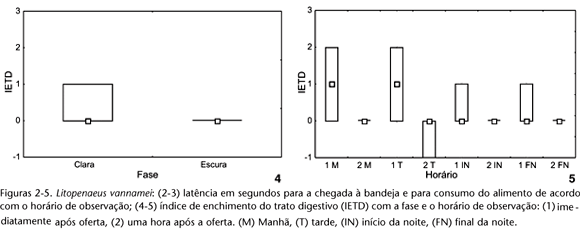The few data on the marine shrimp Litopenaeus vannamei (Boone, 1931) behavior related to feed offer in trays can result inadequate feeding by the animal, feed wastage and unnecessary nutrient input, increasing feed costs and potential environmental pollution of that culture. In order to provide tools for improved feed management methods in shrimp farms, a behavioral study was conducted, using 64 Litopenaeus vannamei juveniles (7,57 ± 1,01g), one animal per 33 m². They were submitted to artificial photoperiods, half of them in reversed cycle, in order to register behavior during light and dark phases. The following variables were registered (continuous sampling) after feed exposition: a) latency to access the feeding tray, b) latency to start eating and c) digestive tract filling. The animals accessed the feeding trays and started consumption faster in the light phase hours. The digestive tract filling was higher half hour following feed offer, specially in the hours during the light phase.
Applied ethology; behavior; feeding; shrimp culture



